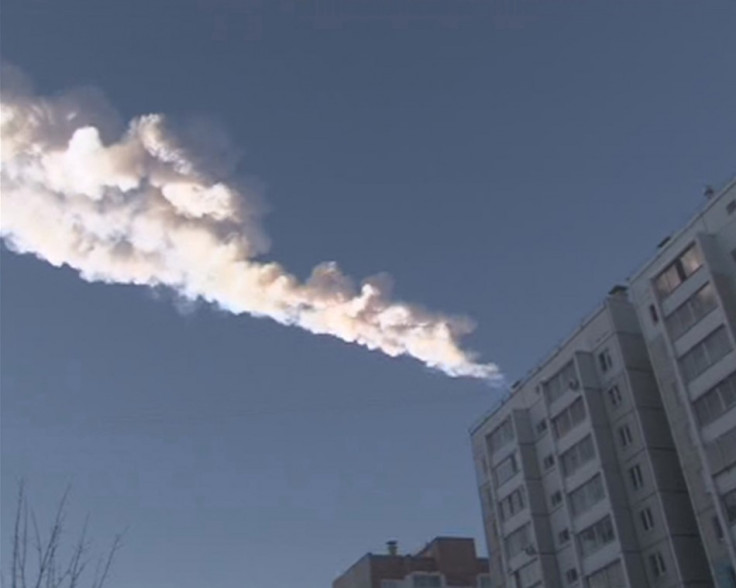Russian Chelyabinsk Meteor Was Part of 'Gang of Asteroids' Threatening Earth

The Russian meteor that hit Chelyabinsk in February, injuring over 1,000 people, could be one of a "gang of asteroids" that pose a threat to Earth.
Researchers suggest that the house-sized meteor could be from a broken-up asteroid, and could have a number of siblings also making their way to Earth.
Carlos and Raúl de la Fuente Marcos, scientists from the University of Madrid, wrote a letter detailing their findings in the Monthly Notices of the Royal Astronomical Society: Letters.
They say the meteor is likely from a family of "multiple small asteroids and two relatively large members", which they have called the Chelyabinsk cluster. The parent of the Russian meteor was probably a 200m-wide asteroid known as EO40.
"In this Letter, we assume that the meteoroid responsible for the Chelyabinsk event was the result of a relatively recent asteroid break-up event and use numerical analysis to single out candidates to be the parent body or bodies," they wrote.
"Our analysis indicates that the Chelyabinsk impactor was a small member of a not-previously-identified young asteroid family."
The meteor that hit Russia, a superbolide, did not cause any deaths but generated a shock that damaged many buildings. It was the biggest natural object to have entered the Earth's atmosphere since 1908, when the Tunguska explosion destroyed a forest in Siberia.

According to Nature, the evidence presented by the scientists is circumstantial, but may point to a "gang of asteroids that still pose a threat to Earth".
Marcos and Marcos ran simulations of billions of possible orbits to find the ones most likely to have resulted in a collision. The ten best orbits were then used to search Nasa's asteroid catalogue for known objects on similar paths.
They found 20 and suggest the Chelyabinsk meteor was a piece of asteroid that broke off from a larger rock at some point in the last 40,000 years.
Carlos de la Fuente Marcos told Nature: "More objects with the same orbital signature may encounter our planet in the future."
However, they also note that the gravitational pull of the planets may well alter the asteroid path so could completely avoid Earth, posing no risk to the planet.
"Although the numerical and statistical evidence in favour of a Chelyabinsk asteroid family or complex is quite encouraging, the ultimate proof of a truly genetic relationship between all these objects requires spectroscopy or, much better, sample-return," they said.
"Our calculations suggest a dynamical link between some of the candidates and the superbolide but, unfortunately, the current orbits of all the candidates are not reliable enough to claim a conclusive connection although the available evidence is certainly encouraging."
© Copyright IBTimes 2024. All rights reserved.






